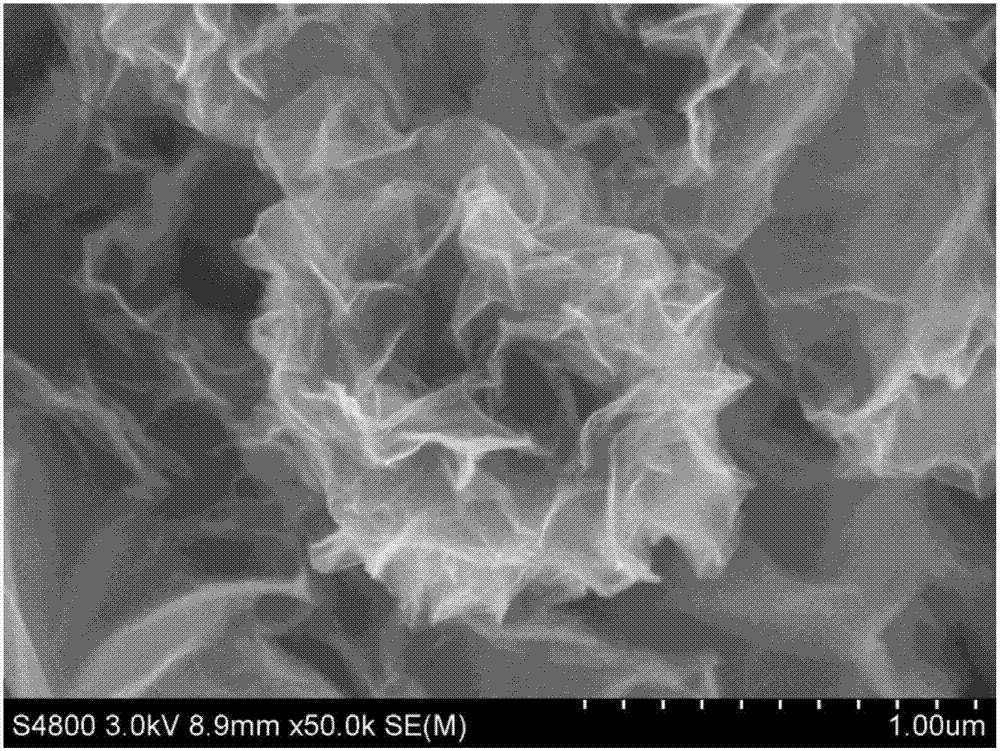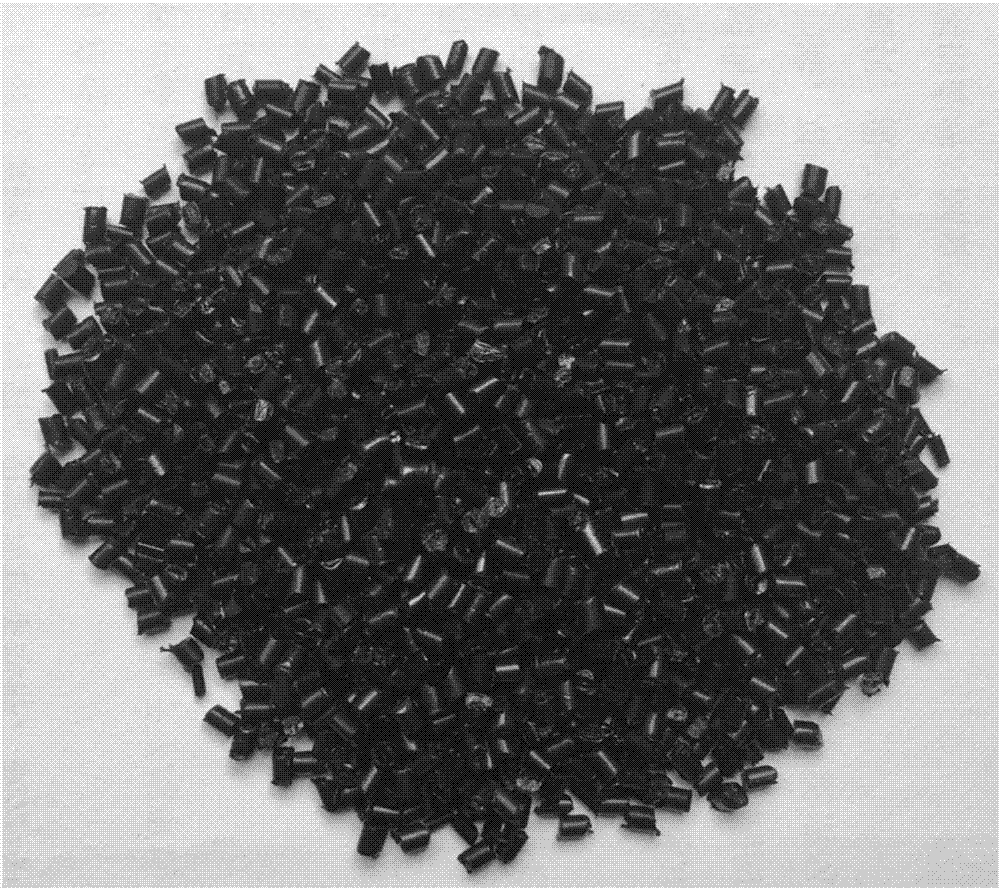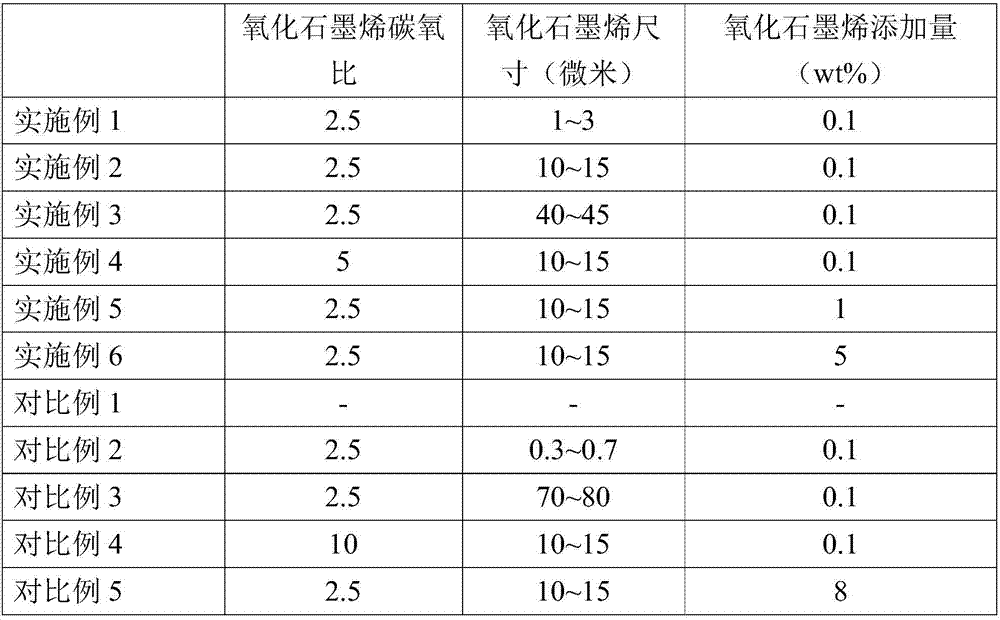High-strength melt dripping resistant graphene/PET composite plate and production method thereof
A composite plate and graphene technology, applied in the field of composite materials, can solve problems such as high cost, unsuitable for actual production, complicated preparation process, etc., and achieve the effects of low cost, improved anti-droplet performance, and improved compatibility
- Summary
- Abstract
- Description
- Claims
- Application Information
AI Technical Summary
Problems solved by technology
Method used
Image
Examples
Embodiment 1
[0025] (1) drying the single-layer graphene oxide dispersion by an atomization drying method to obtain graphene oxide microspheres, the atomization temperature is 130° C., the size of the graphene oxide sheet is 1 to 3 microns, and the carbon-to-oxygen ratio is 2.5;
[0026] (2) Fully mix and stir 100 parts by mass of terephthalic acid, 53 parts by mass of ethylene glycol, and 0.02 parts by mass of sodium acetate, and carry out esterification reaction at 250°C until anhydrous is produced;
[0027] (3) Add 0.117 parts by mass of pleated spherical graphene oxide obtained in step (1) and 0.018 parts by mass of ethylene glycol antimony to the esterified product obtained in step (2), keep stirring for 2 hours, and the stirring speed is 160 rpm , then heated up to 285°C and vacuumized, the reaction was carried out until the system no longer exothermic, and the graphene / PET nanocomposite material was obtained by water-cooling and pelletizing.
[0028] (4) 100 parts by mass of the gra...
Embodiment 2
[0031] (1) drying the single-layer graphene oxide dispersion by an atomization drying method to obtain graphene oxide microspheres, the atomization temperature is 130°C, the size of the graphene oxide sheet is 10-15 microns, and the carbon-oxygen ratio is 2.5;
[0032] (2) Fully mix and stir 100 parts by mass of terephthalic acid, 53 parts by mass of ethylene glycol, and 0.02 parts by mass of sodium acetate, and carry out esterification reaction at 250°C until anhydrous is produced;
[0033](3) Add 0.117 parts by mass of pleated spherical graphene oxide obtained in step (1) and 0.018 parts by mass of ethylene glycol antimony to the esterified product obtained in step (2), keep stirring for 2 hours, and the stirring speed is 160 rpm , then heated up to 285°C and vacuumized, the reaction was carried out until the system no longer exothermic, and the graphene / PET nanocomposite material was obtained by water-cooling and pelletizing.
[0034] (4) 100 parts by mass of the graphene / P...
Embodiment 3
[0037] (1) drying the single-layer graphene oxide dispersion by an atomization drying method to obtain graphene oxide microspheres, the atomization temperature is 130°C, the size of the graphene oxide sheet is 40-45 microns, and the carbon-oxygen ratio is 2.5;
[0038] (2) Fully mix and stir 100 parts by mass of terephthalic acid, 53 parts by mass of ethylene glycol, and 0.02 parts by mass of sodium acetate, and carry out esterification reaction at 250°C until anhydrous is produced;
[0039] (3) Add 0.117 parts by weight of pleated spherical graphene oxide obtained in step (1) and 0.018 parts by weight of ethylene glycol antimony to the esterified product obtained in step (2), keep stirring for 2 hours, and the stirring speed is 160 rpm , then heated up to 285°C and vacuumized, the reaction was carried out until the system no longer exothermic, and the graphene / PET nanocomposite material was obtained by water-cooling and pelletizing.
[0040] (4) 100 parts by mass of the graph...
PUM
 Login to View More
Login to View More Abstract
Description
Claims
Application Information
 Login to View More
Login to View More - R&D
- Intellectual Property
- Life Sciences
- Materials
- Tech Scout
- Unparalleled Data Quality
- Higher Quality Content
- 60% Fewer Hallucinations
Browse by: Latest US Patents, China's latest patents, Technical Efficacy Thesaurus, Application Domain, Technology Topic, Popular Technical Reports.
© 2025 PatSnap. All rights reserved.Legal|Privacy policy|Modern Slavery Act Transparency Statement|Sitemap|About US| Contact US: help@patsnap.com



